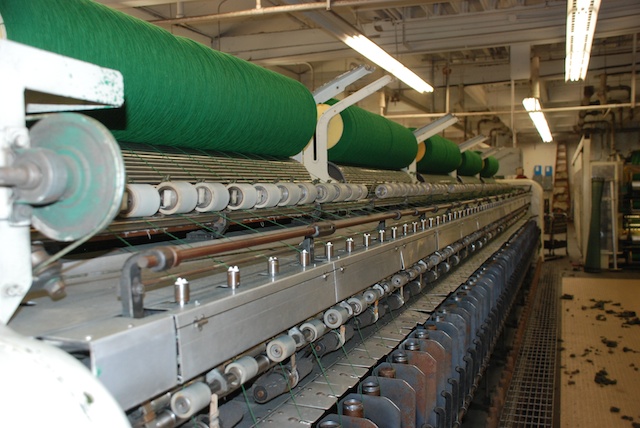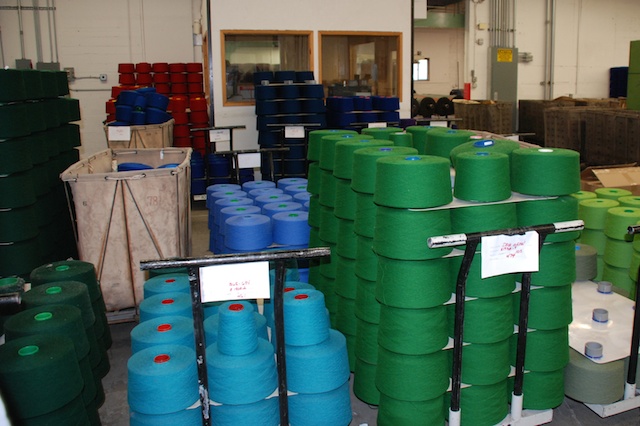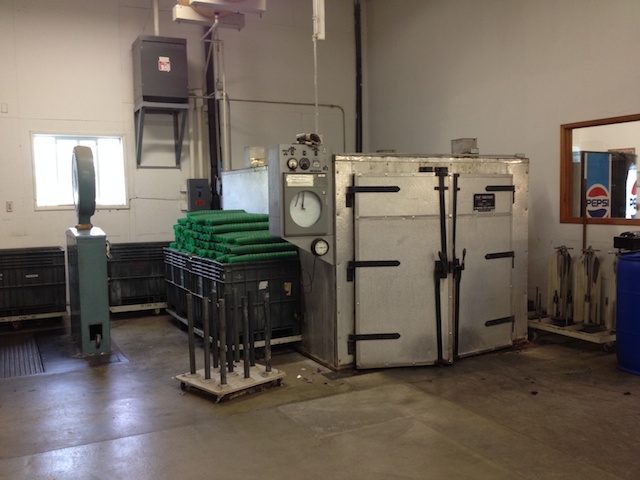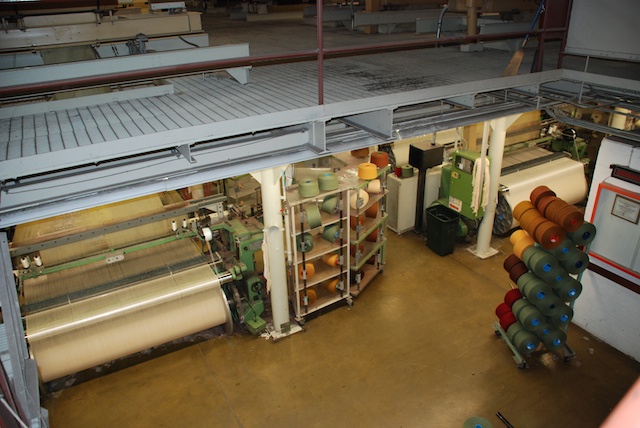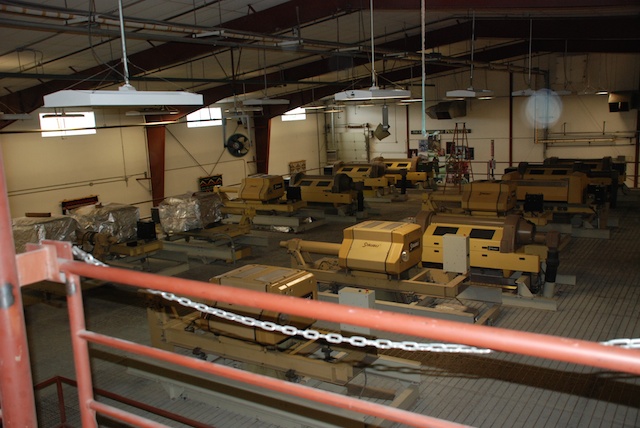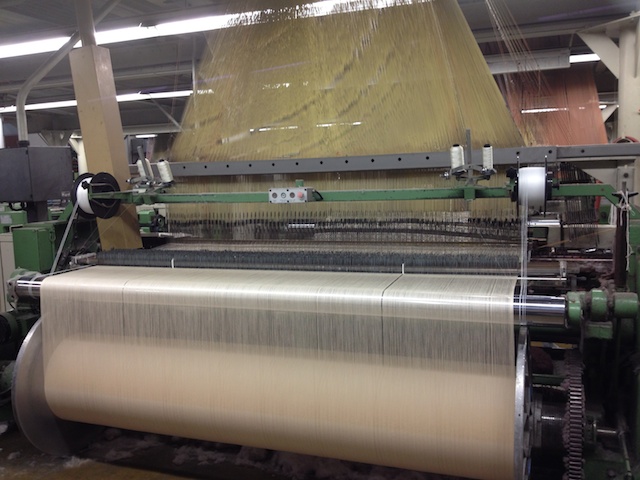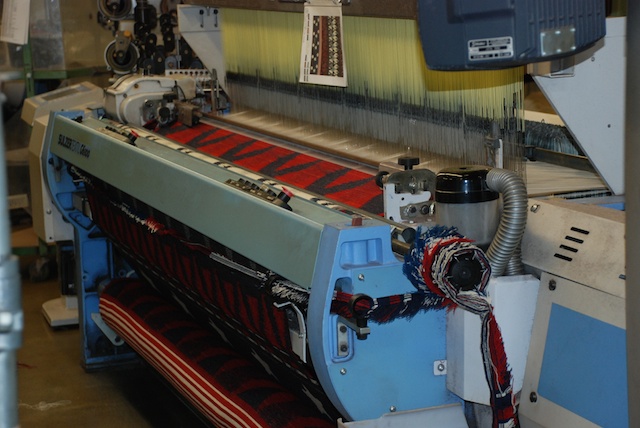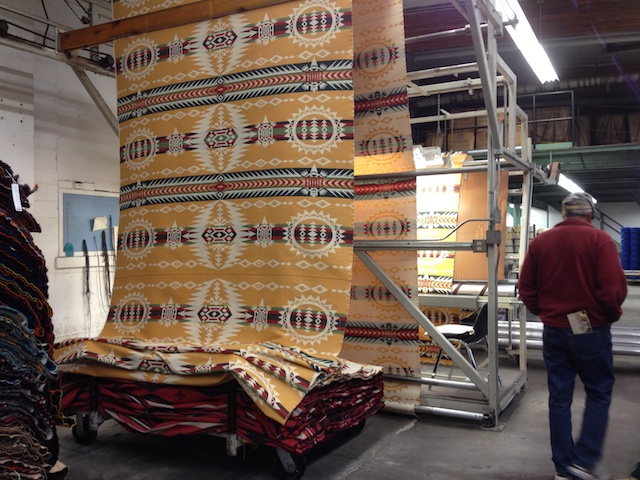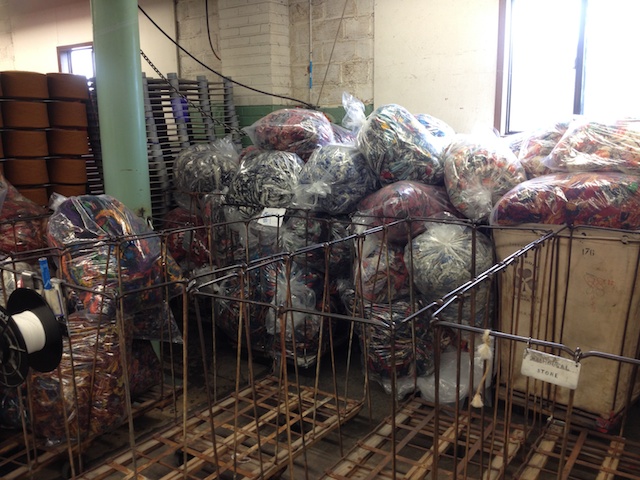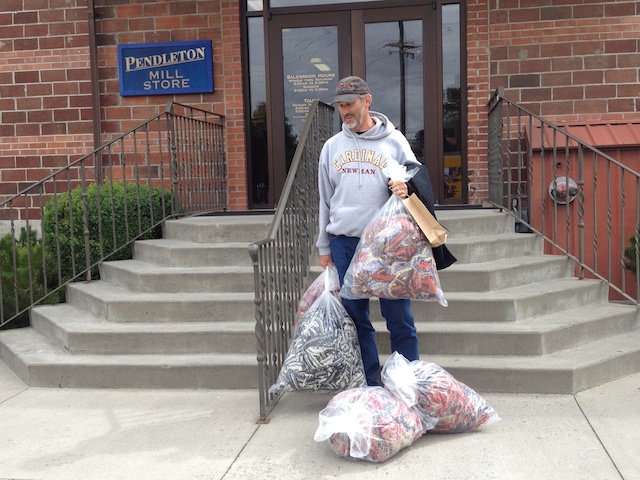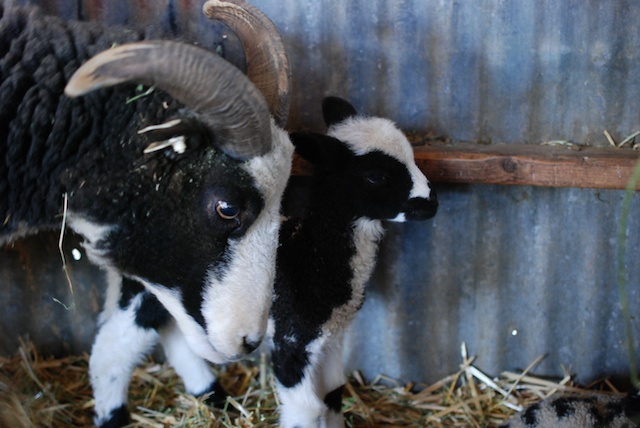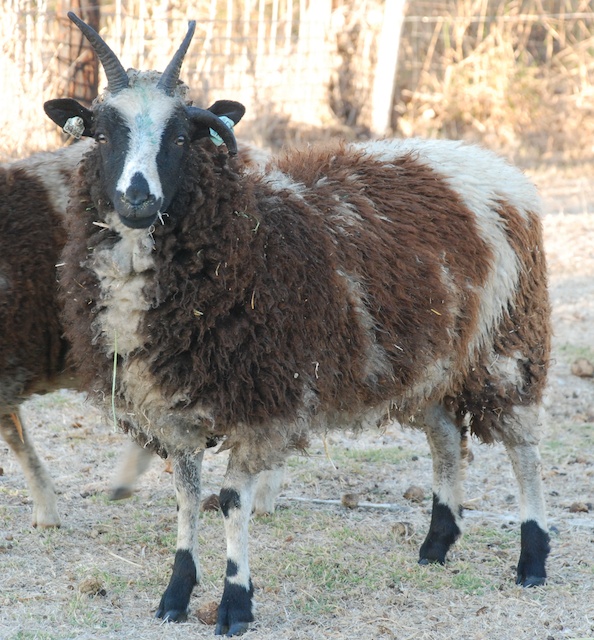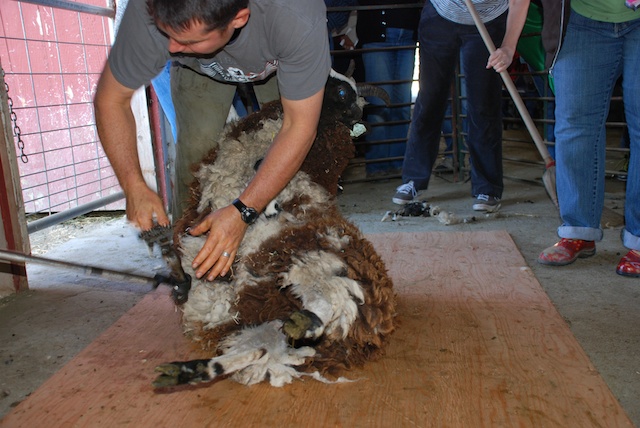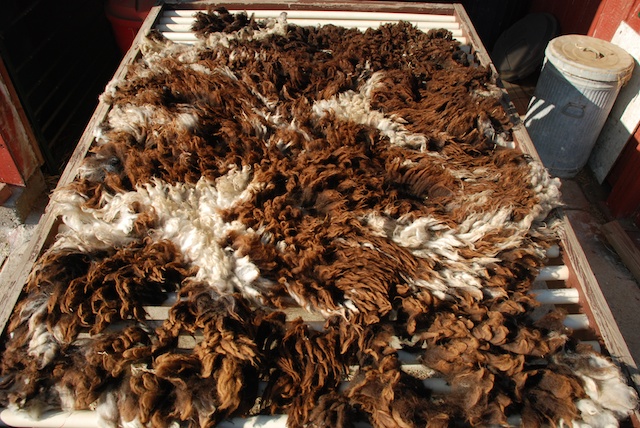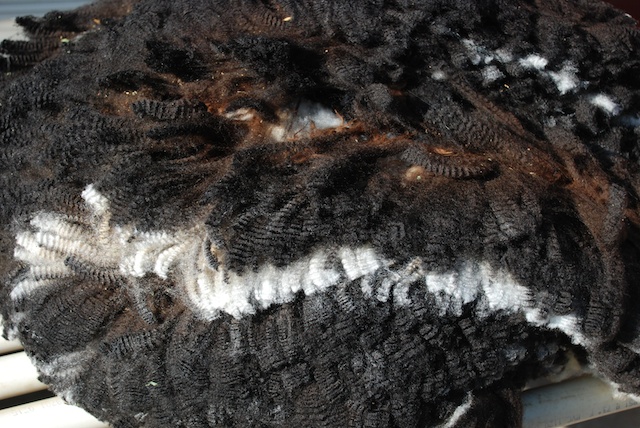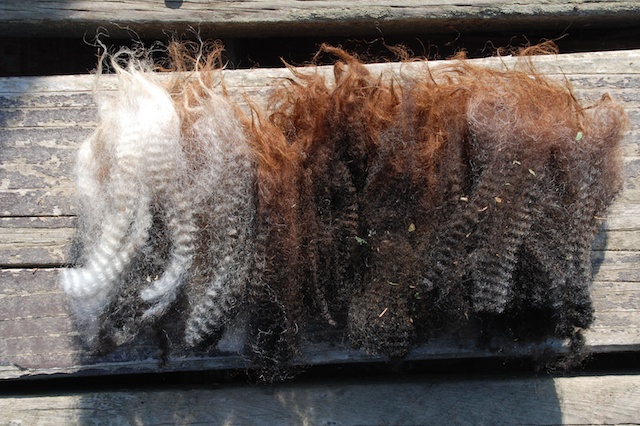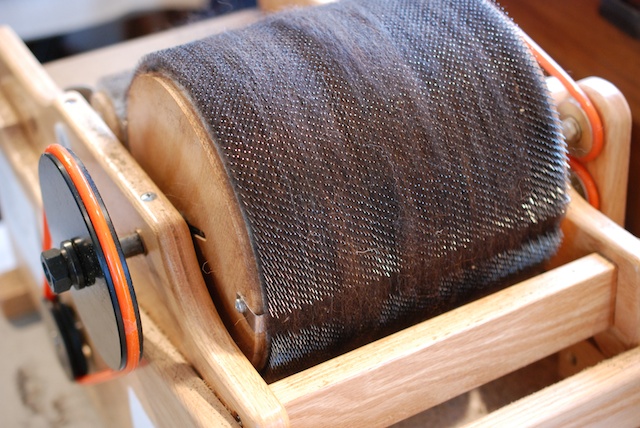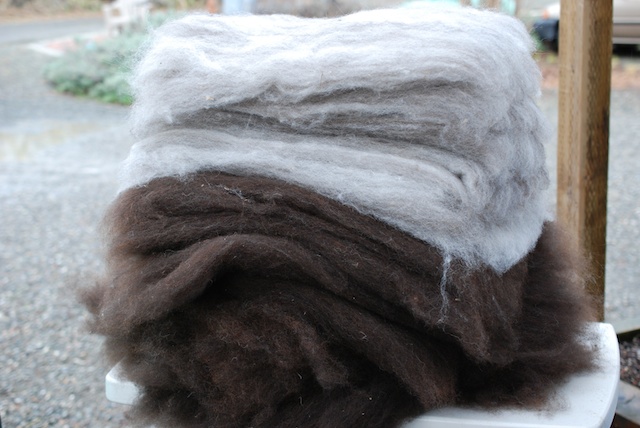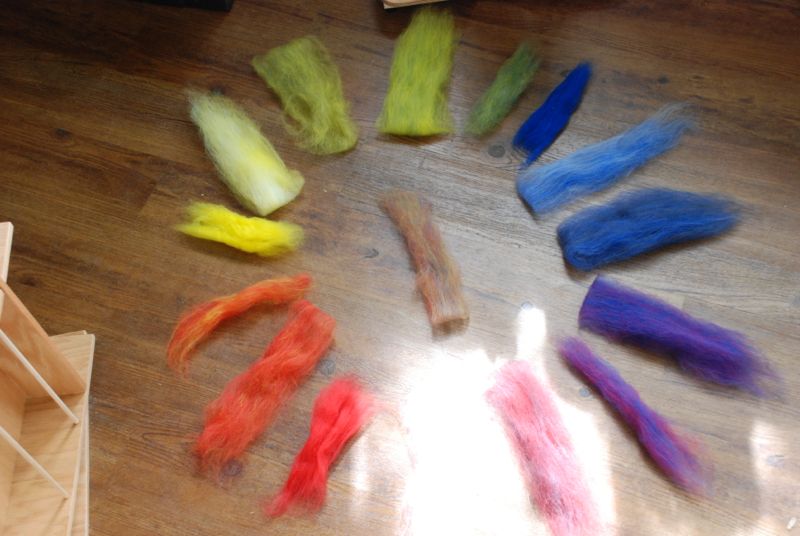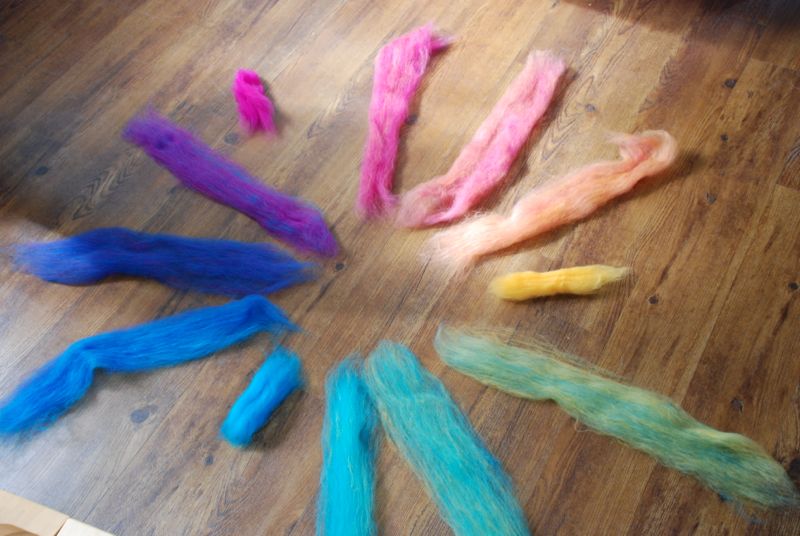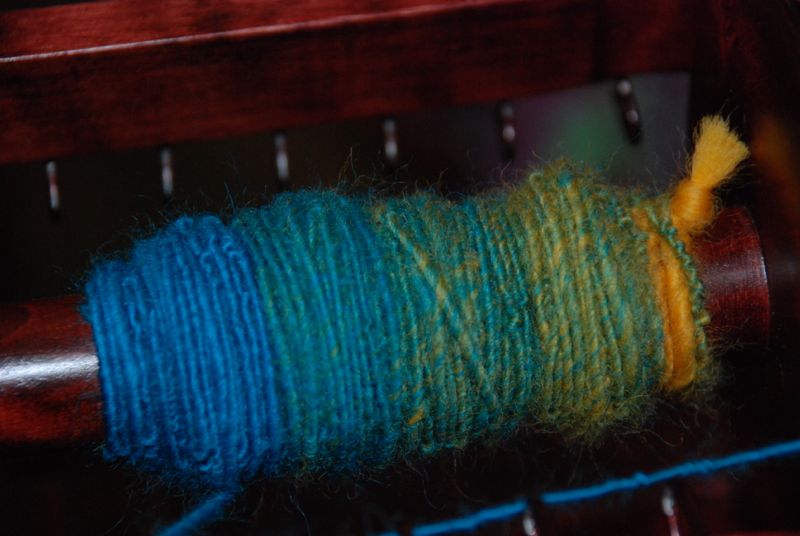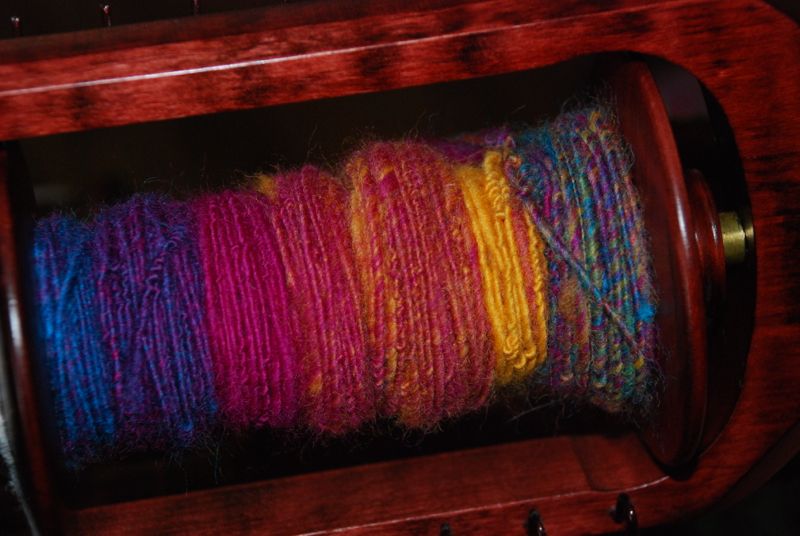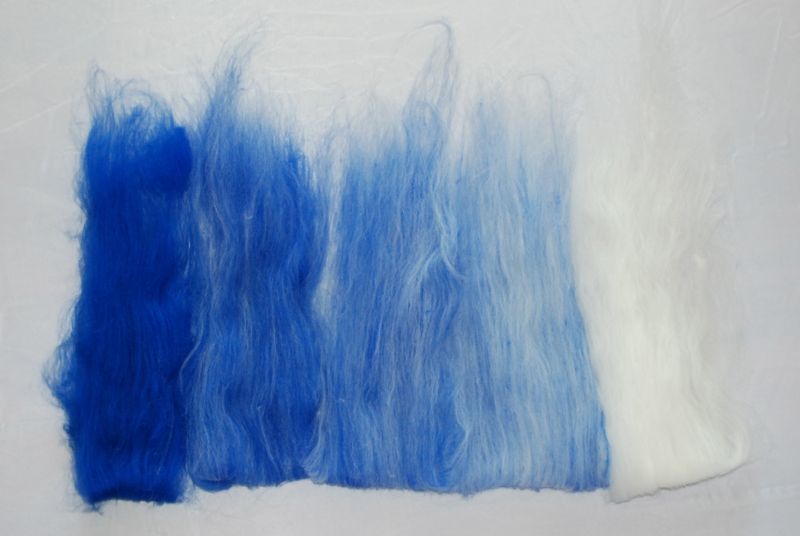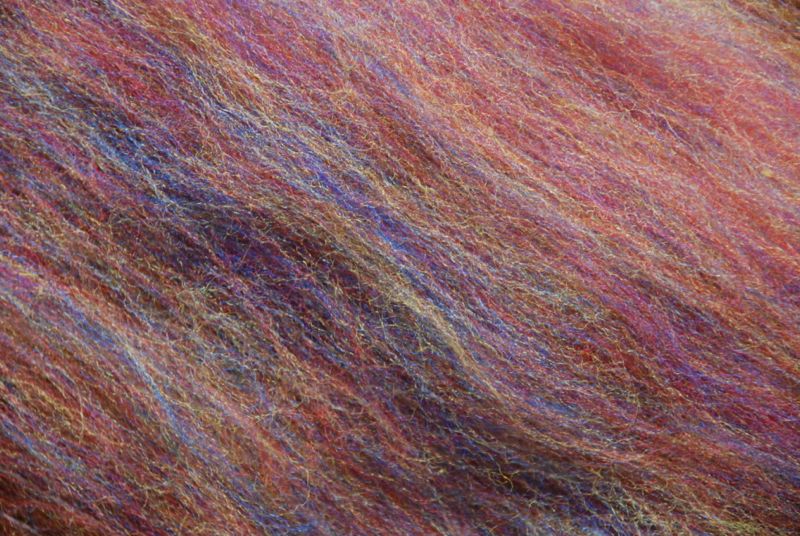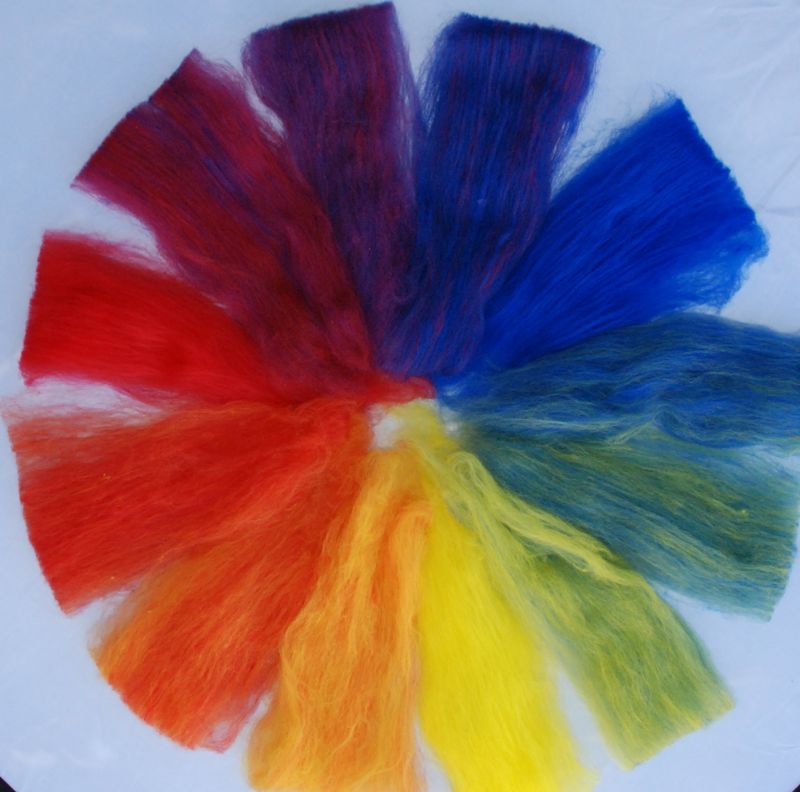I haven’t posted since I was in Texas over a week ago. I had a great time with my granddaughter but what did I bring home? Not a puppy. Not a longhorn. A cold. So I felt pretty awful for several days, but I’m back and trying to catch up with things. (Although I’m catching up on computer stuff early in the morning because the cough kept me from going back to sleep.)
Lambtown, the annual sheep/wool festival in Dixon was last weekend. It’s only 15 minutes from home so it really couldn’t be easier. But being a vendor at a fiber festival is never easy.
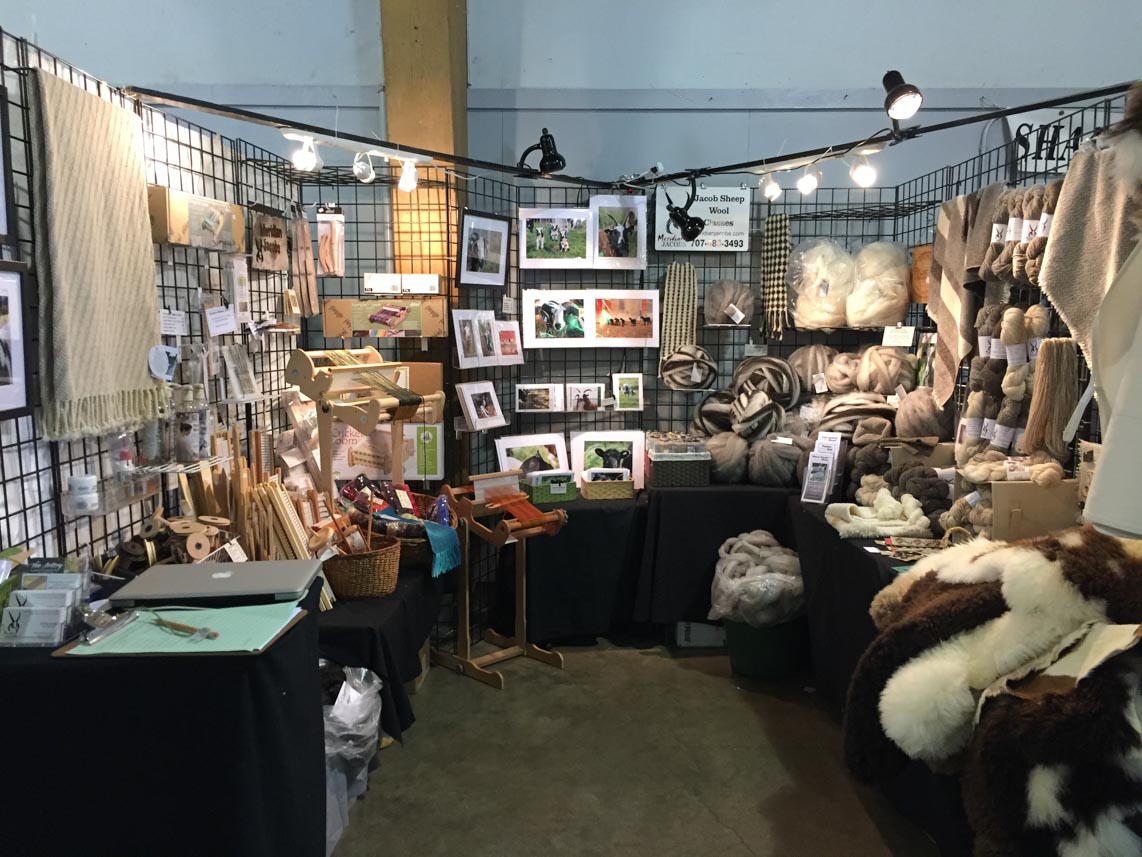
It is always a challenge to decide what to bring and how to fit it in a 10’x10′ space (which really wasn’t this year, especially when you subtract the space with the post in the back corner). This year I focused on products that no one else would have.
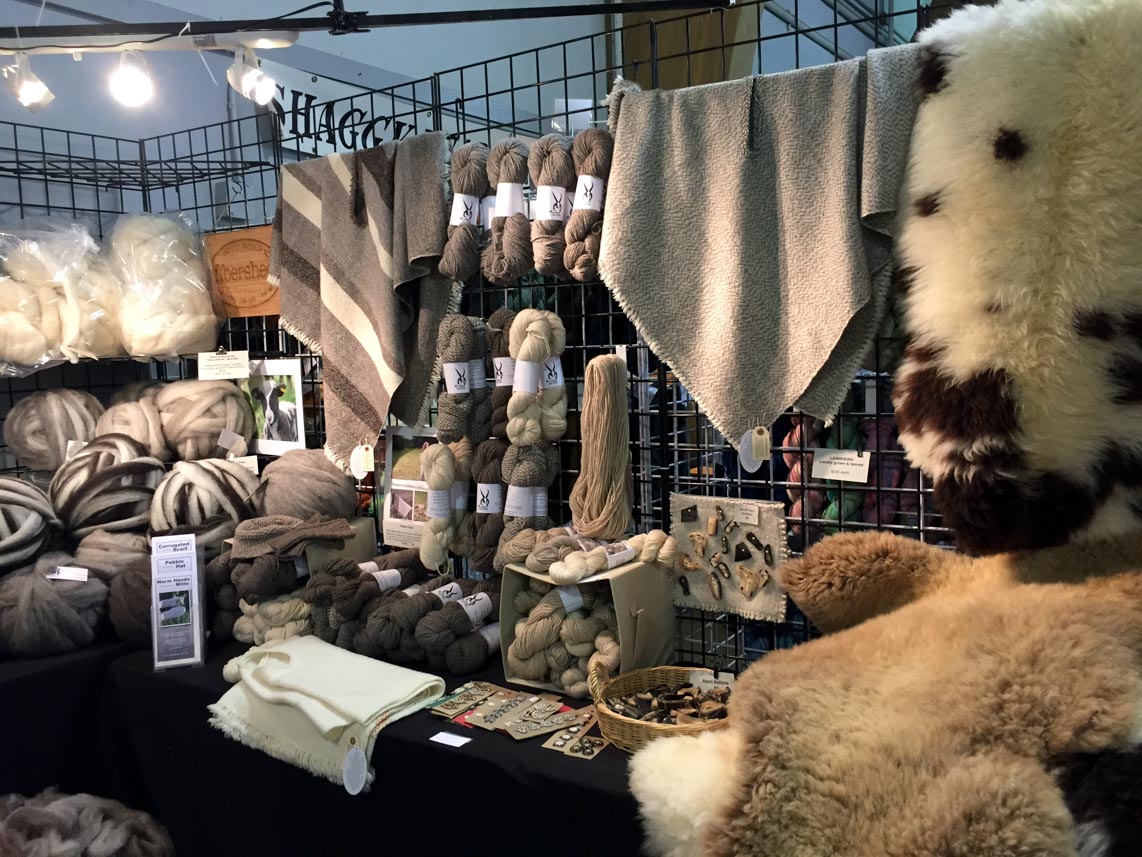 I brought my brand new lambskins (incredibly soft and fluffy), brand new handwoven ponchos, and Jacob fiber and yarn and buttons.
I brought my brand new lambskins (incredibly soft and fluffy), brand new handwoven ponchos, and Jacob fiber and yarn and buttons.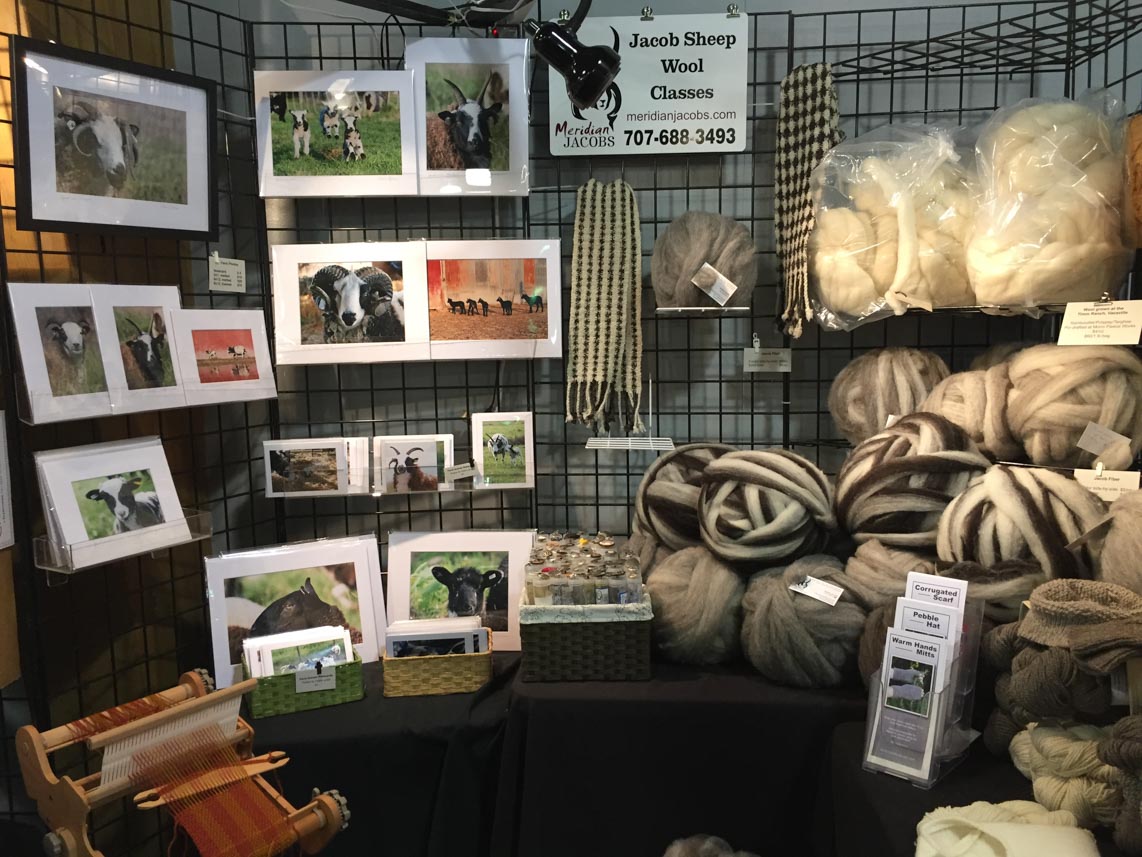 I brought my new farm photos in 2 sizes and as notecards. There were also my new calendars. (As I’m writing this I realize that there are a lot of new things to get listed on the website.) I also brought rigid heddle looms and weaving equipment.
I brought my new farm photos in 2 sizes and as notecards. There were also my new calendars. (As I’m writing this I realize that there are a lot of new things to get listed on the website.) I also brought rigid heddle looms and weaving equipment.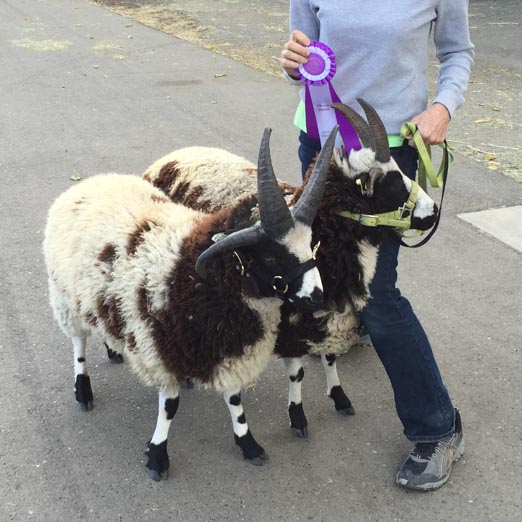
In addition I brought sheep. I had chosen to not bring sheep because it’s just too much work to have a vendor booth and sheep in the barn, but the show organizer asked me to bring my sheep. With the help of Farm Club it all worked out. The Primitive Breeds Sheep Show wasn’t very big but there was some Shetland competition. Honey and Marv were awarded Champion Ewe and Champion Ram in the division. They make a nice looking pair.
As Lambtown ended, Spinzilla week began. From the website: “Spinzilla is a global event where teams and individuals compete in a friendly challenge to see who can spin the most yarn in a week!” This is the fourth year that I have hosted a team for this program that raises money for youth needlearts mentoring programs all over the country.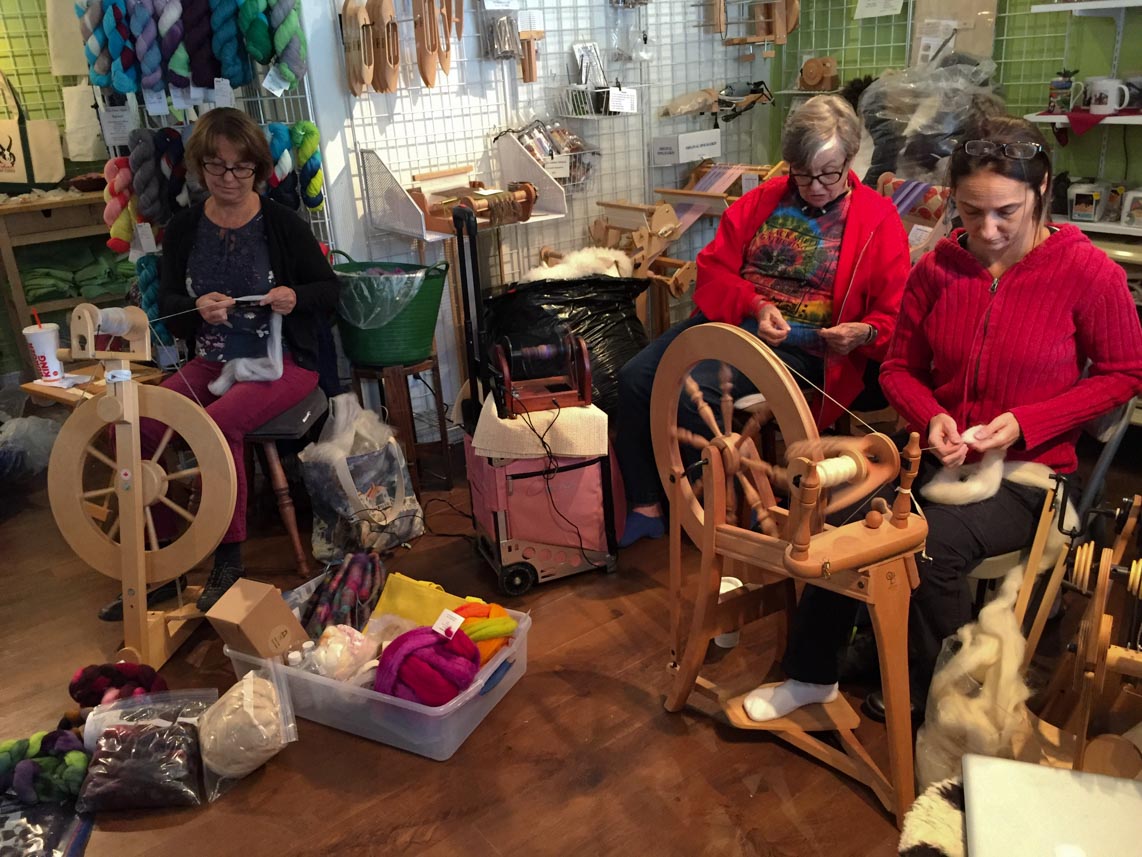 Not all of our spinners are local, but some who are showed up here Monday morning.
Not all of our spinners are local, but some who are showed up here Monday morning.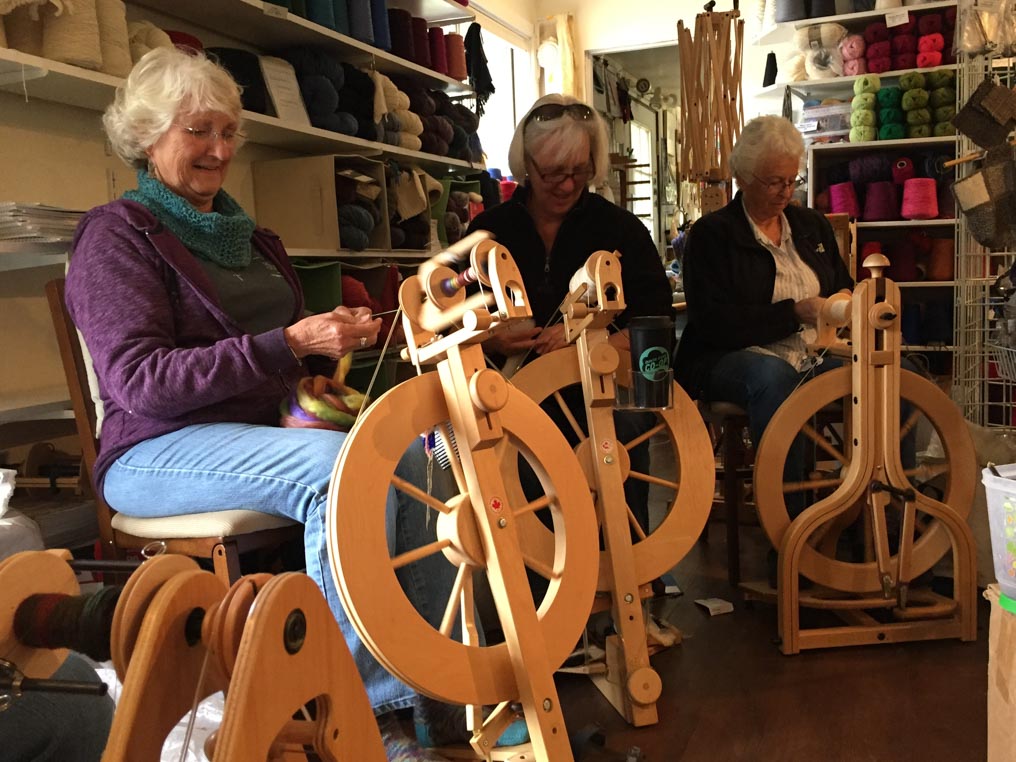
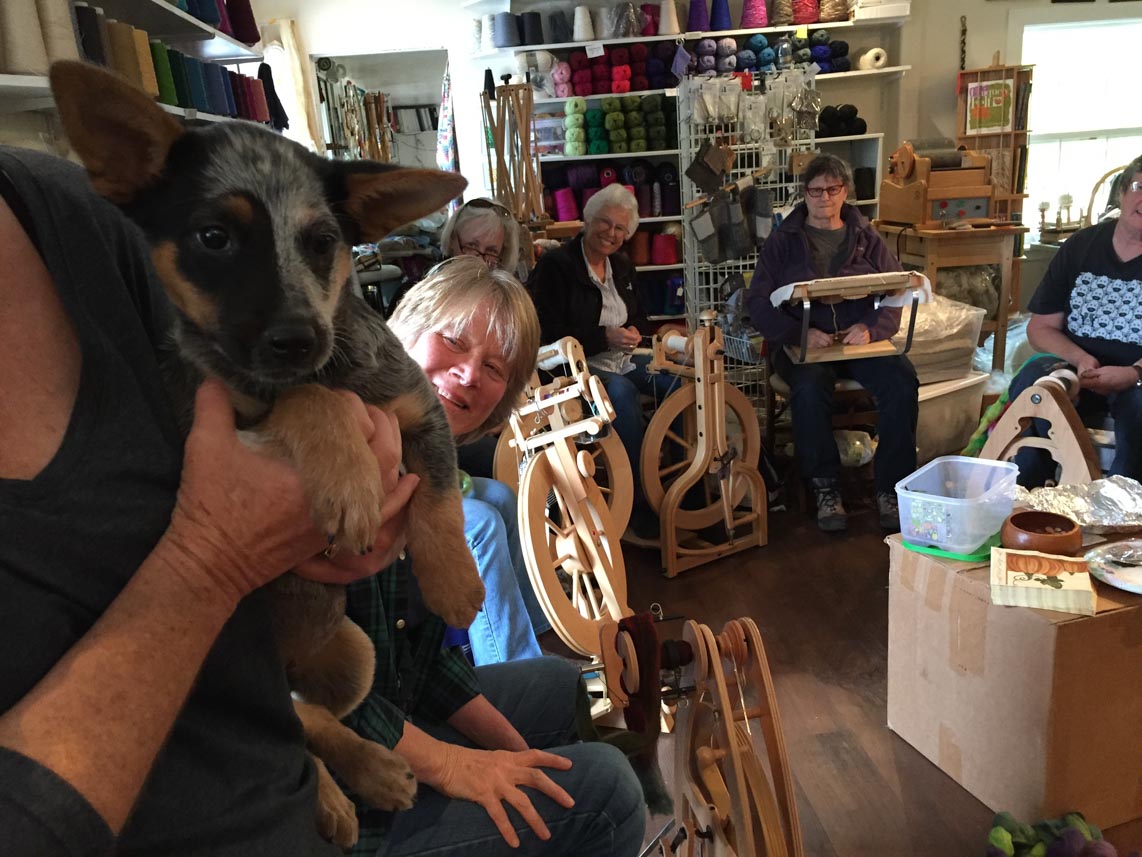 We had to take a puppy break at one point when my sister-in-law visited with her new 2-month old Queensland heeler.
We had to take a puppy break at one point when my sister-in-law visited with her new 2-month old Queensland heeler.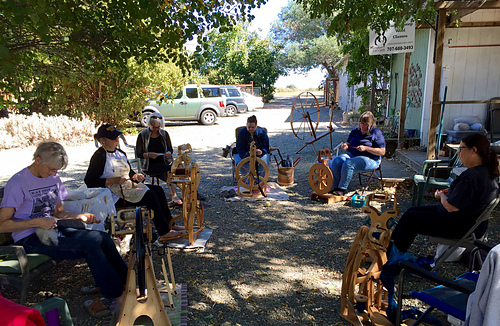
Spinners are continuing to spin at home all week, but on Wednesday several showed up here again. The weather was nice enough to be outside. Notice the wheel in the background.
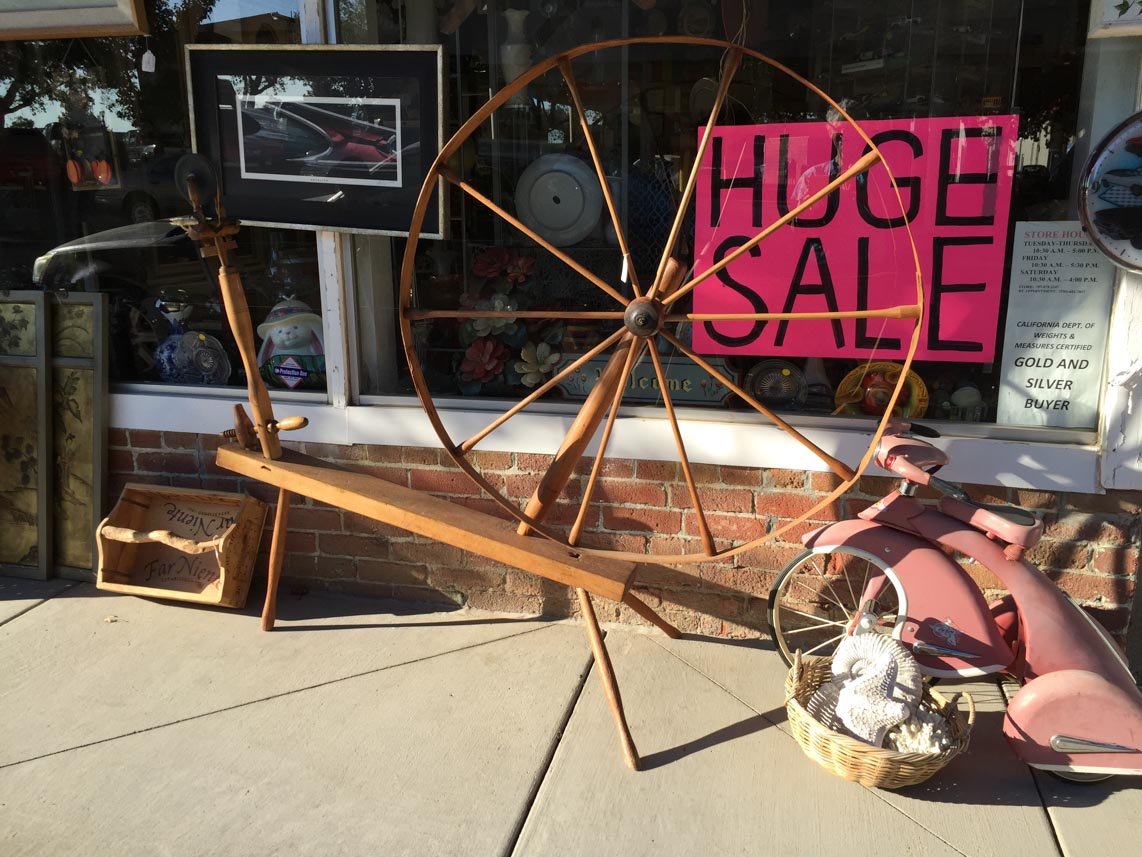
I had seen this on the way to the bank in Dixon on Thursday evening. All it needed was a drive band and a cotter pin to hold the wheel in place.
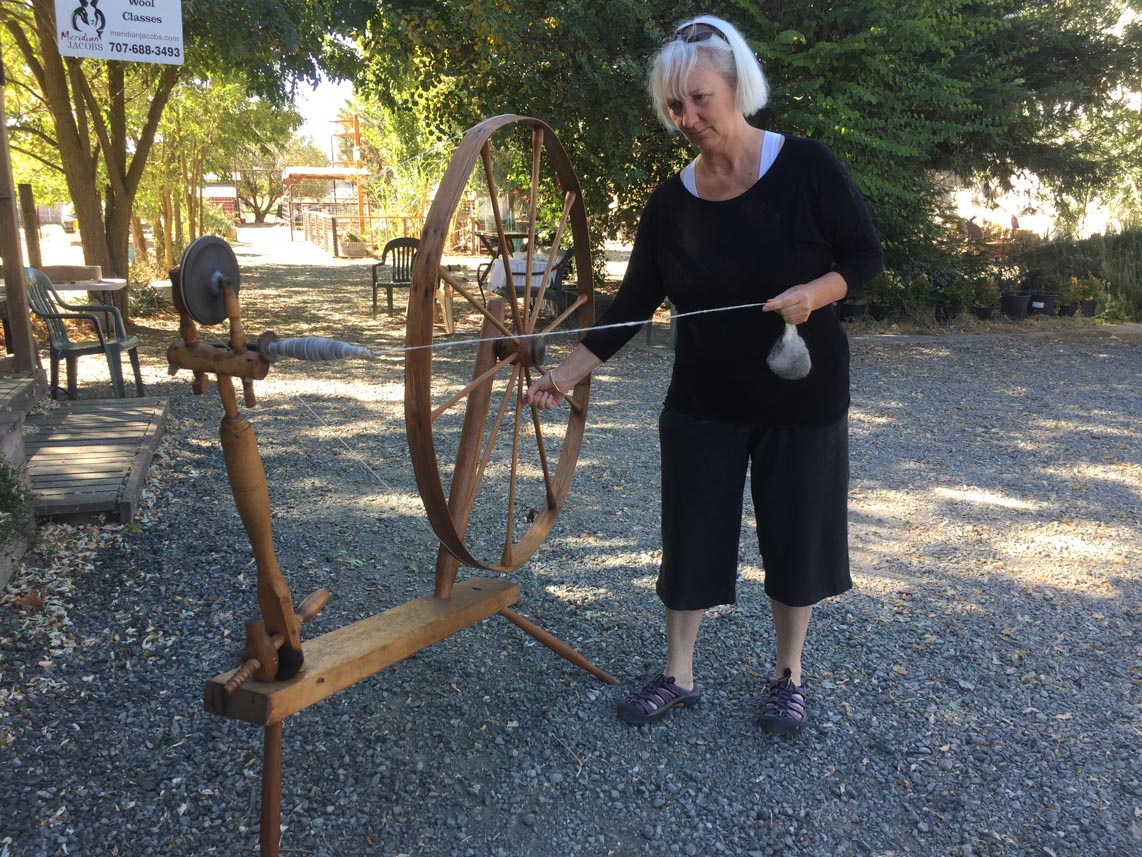
Alison and I got it going. I had figured that I’d resell it because I just don’t have room in the shop or the house. But it is way too cool. I’ll have to hang onto it for awhile at least.
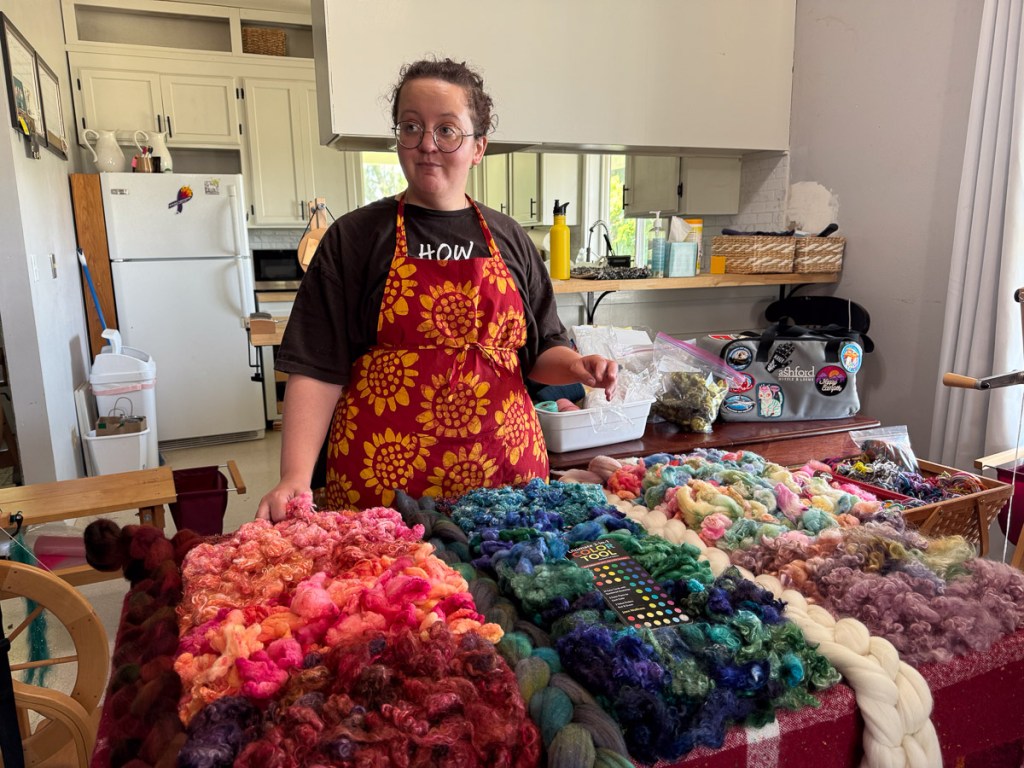
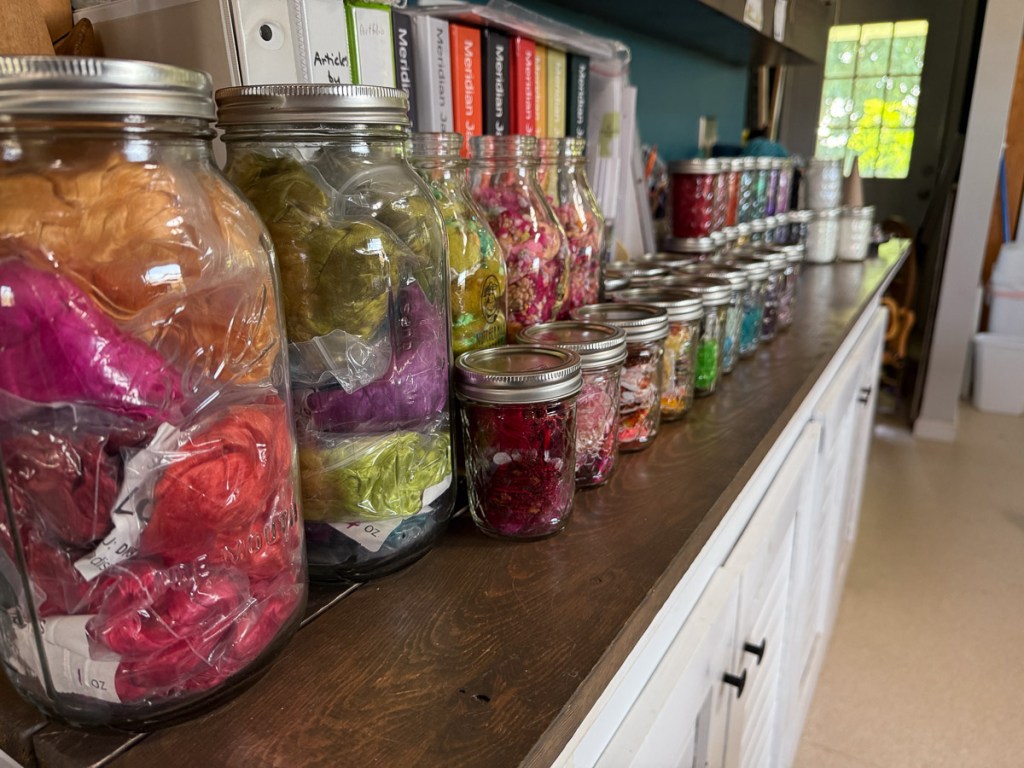





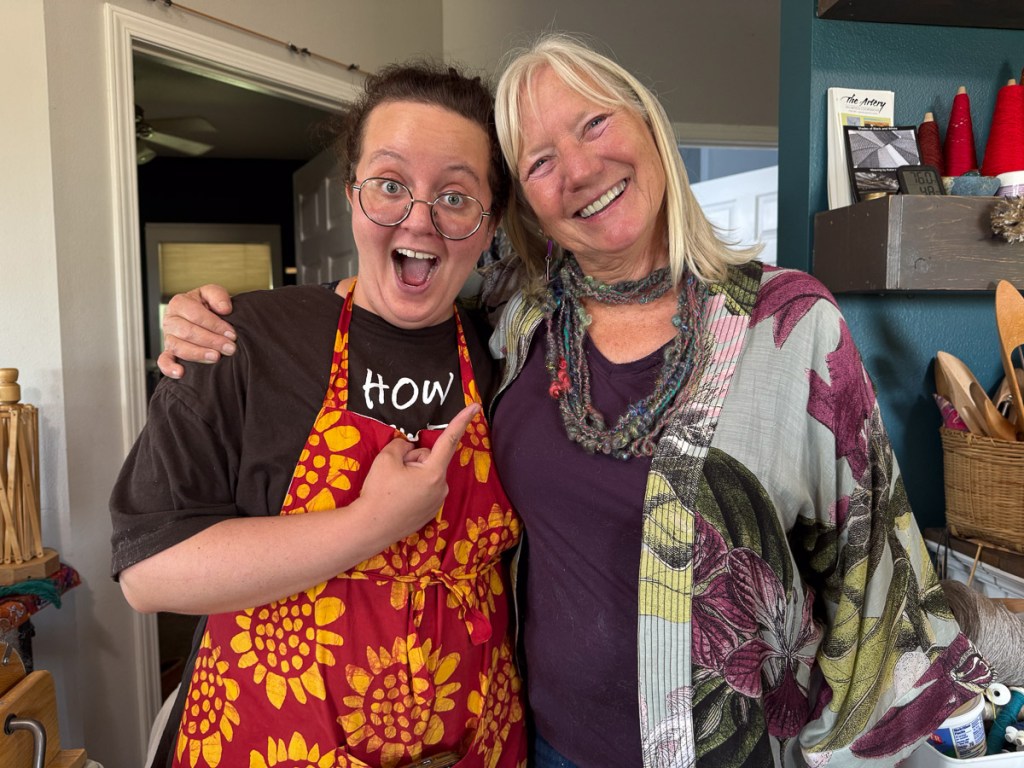
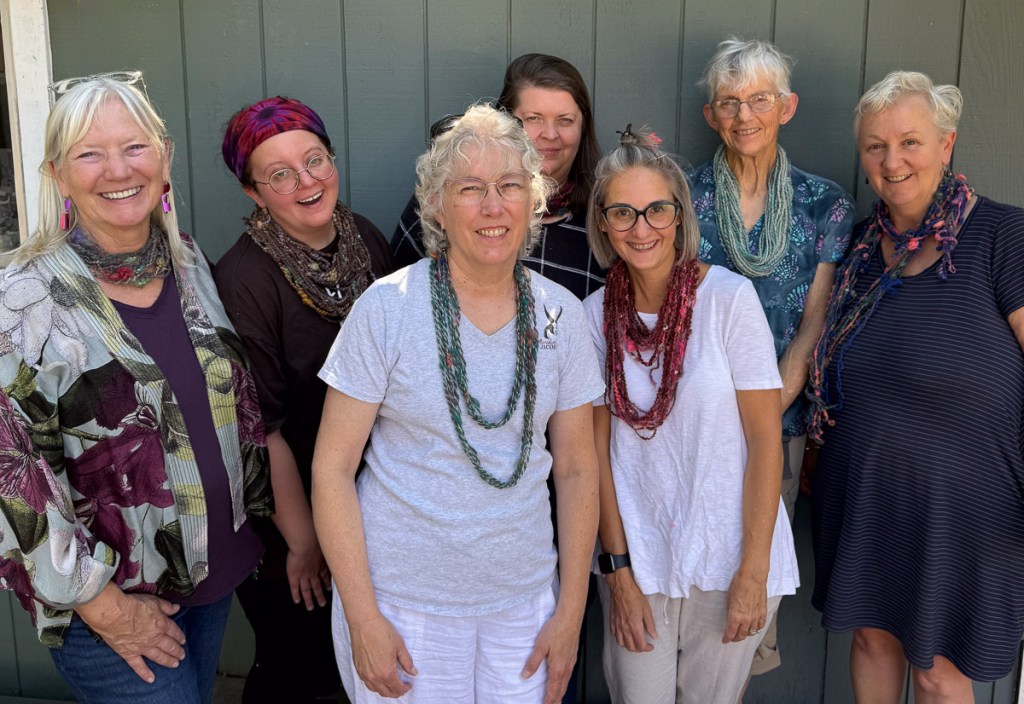

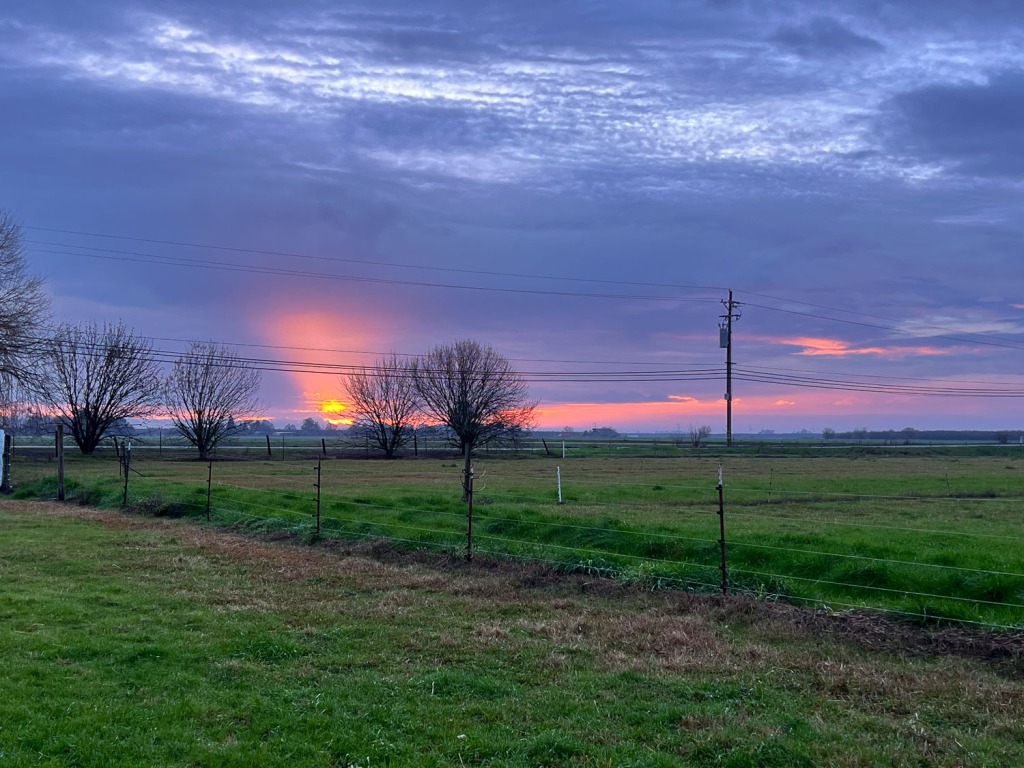
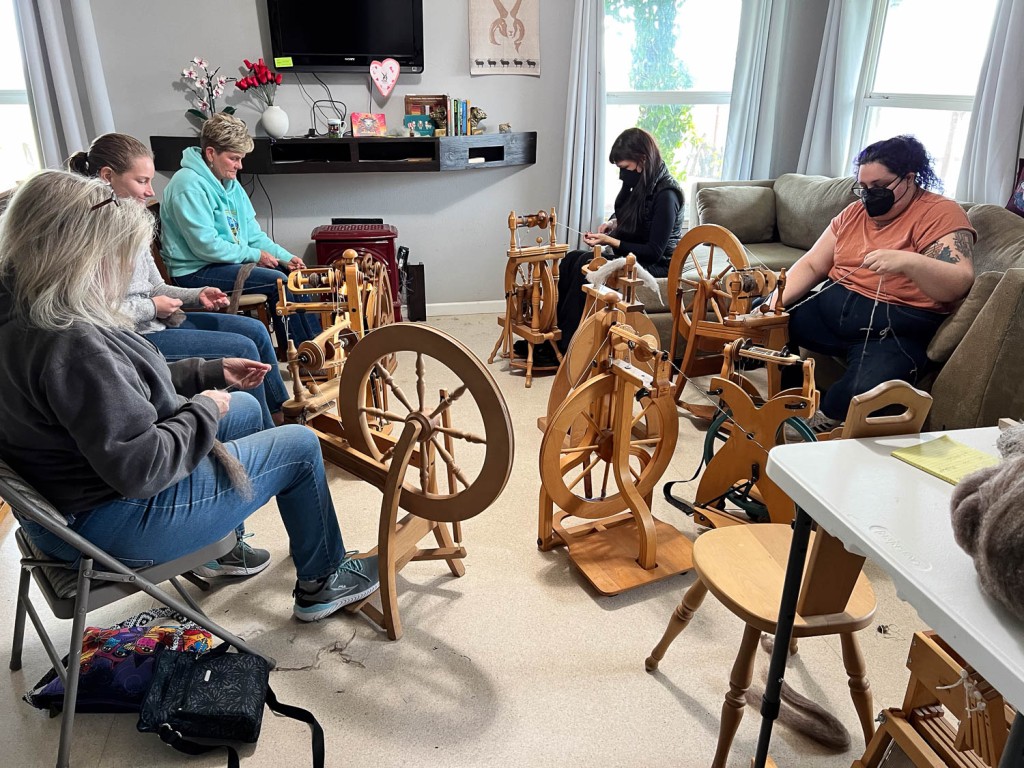

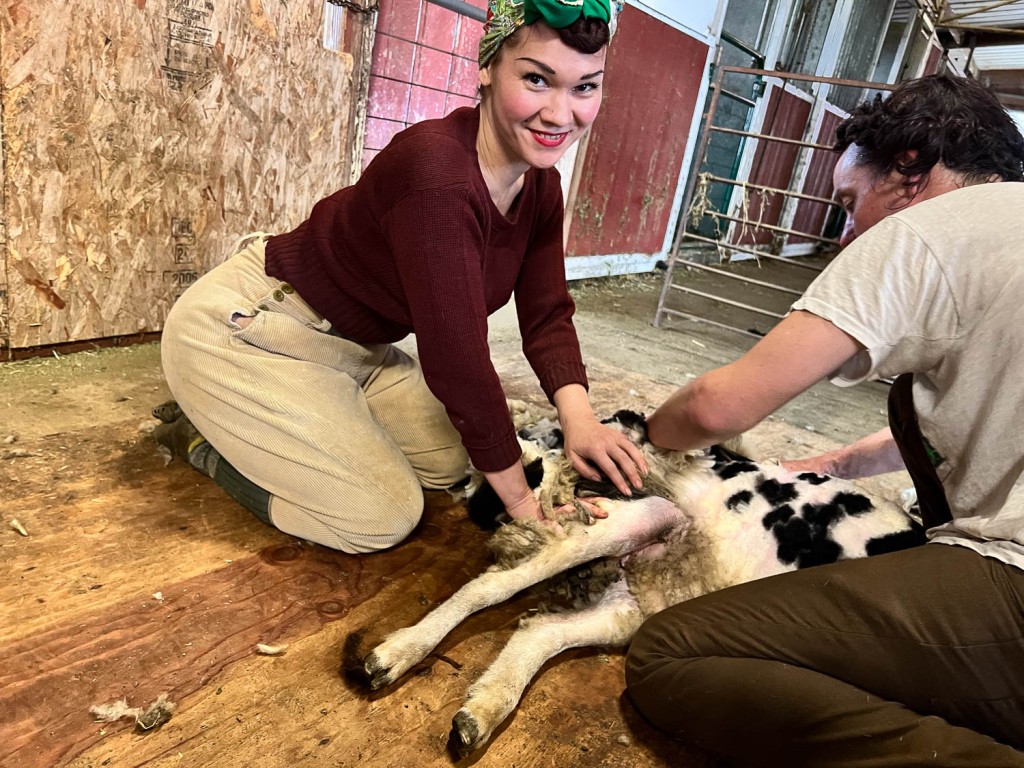


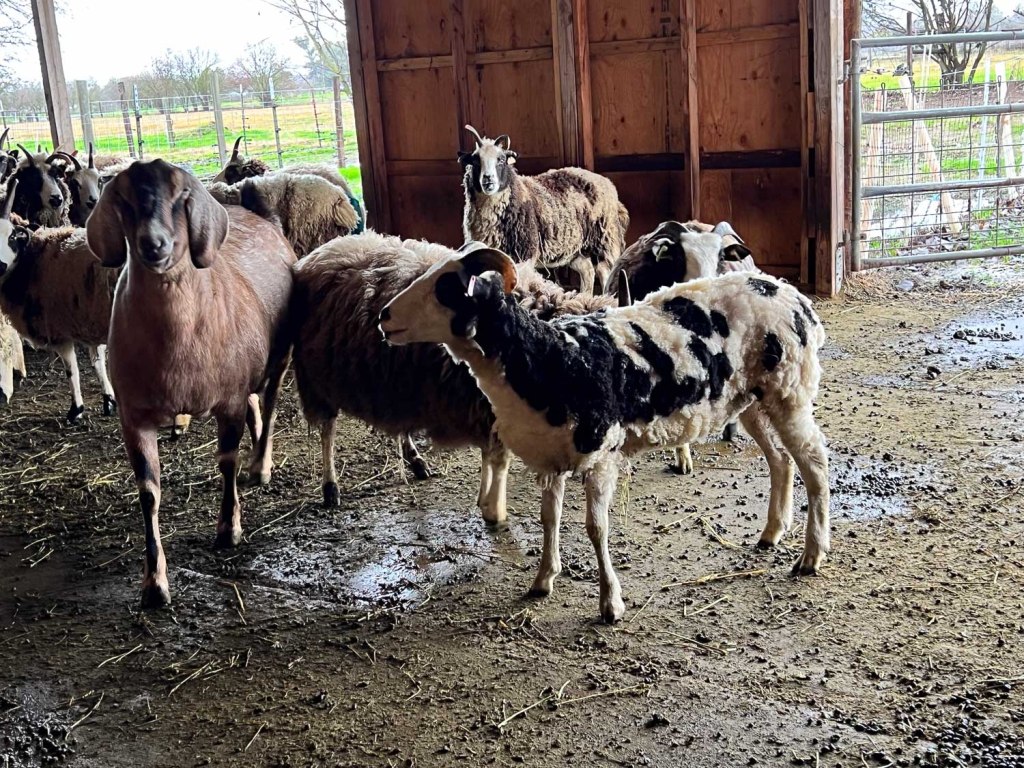

 I brought my brand new lambskins (incredibly soft and fluffy), brand new handwoven ponchos, and
I brought my brand new lambskins (incredibly soft and fluffy), brand new handwoven ponchos, and  I brought my new farm photos in 2 sizes and as notecards. There were also my new calendars. (As I’m writing this I realize that there are a lot of new things to get listed on the website.) I also brought rigid heddle looms and weaving equipment.
I brought my new farm photos in 2 sizes and as notecards. There were also my new calendars. (As I’m writing this I realize that there are a lot of new things to get listed on the website.) I also brought rigid heddle looms and weaving equipment.
 Not all of our spinners are local, but some who are showed up here Monday morning.
Not all of our spinners are local, but some who are showed up here Monday morning.
 We had to take a puppy break at one point when my sister-in-law visited with her new 2-month old Queensland heeler.
We had to take a puppy break at one point when my sister-in-law visited with her new 2-month old Queensland heeler.


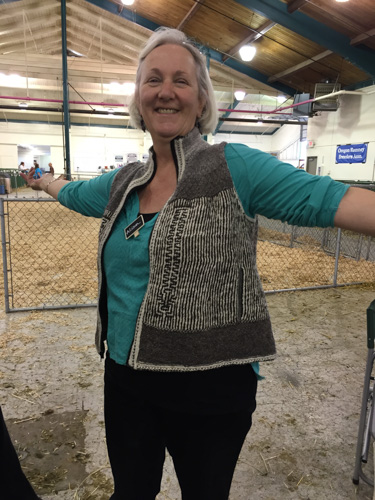
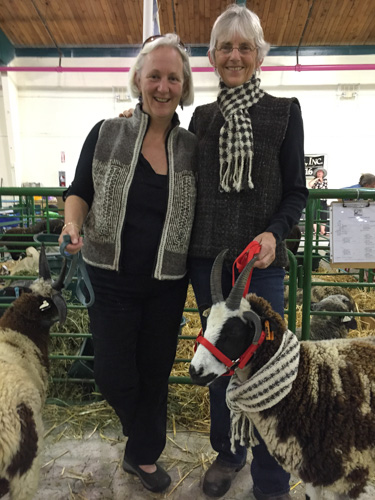
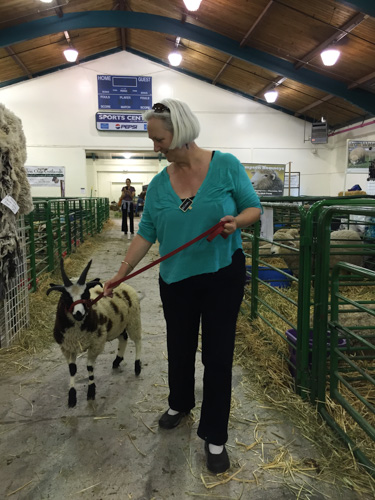
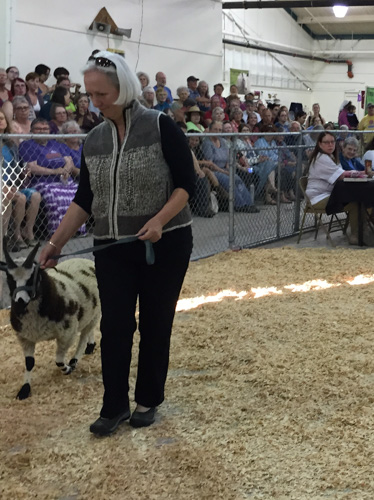
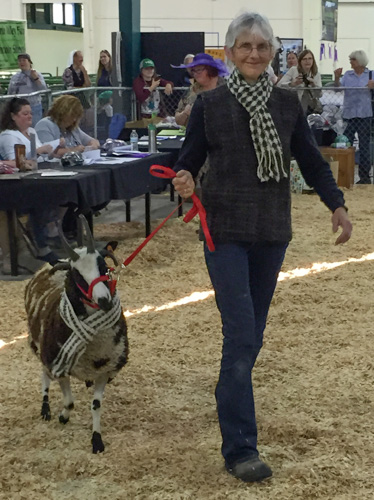
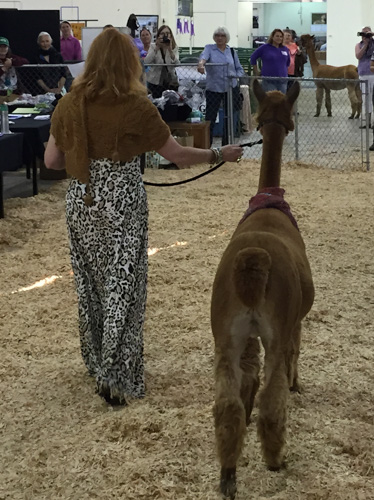
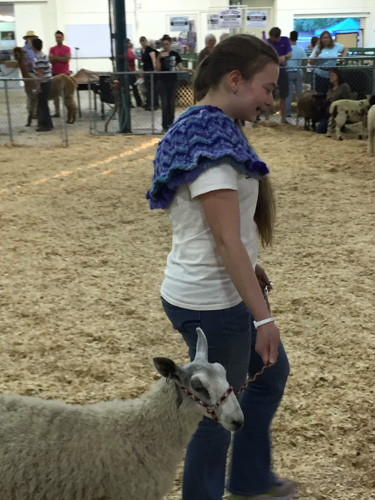
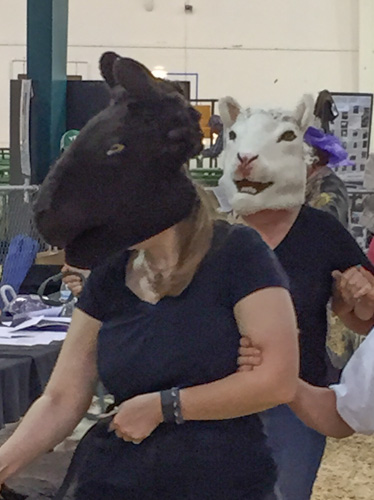
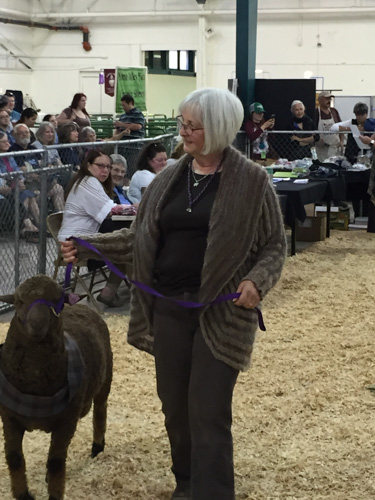
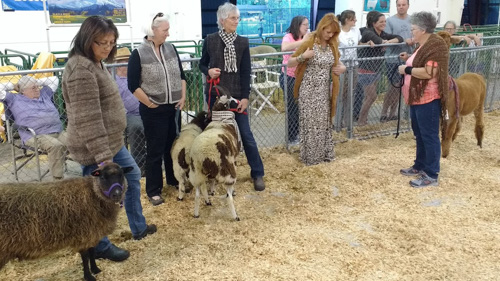
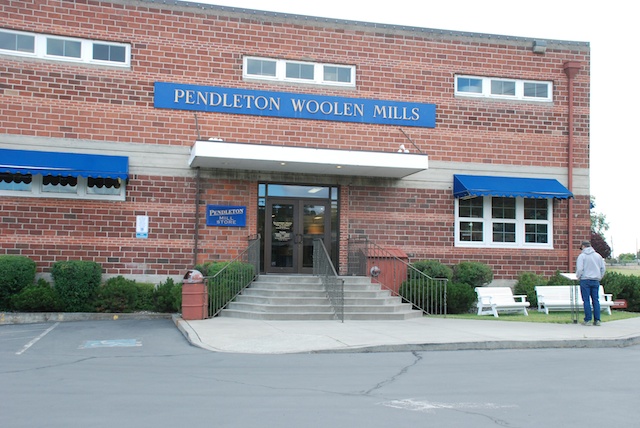
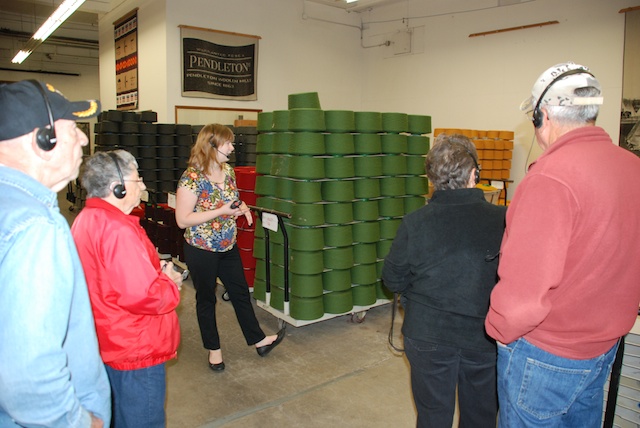 There were about a dozen people there for the tour even at 9 a.m. on a Monday morning. It was interesting to see the workings of the mill but now I have a lot of unanswered questions. We all wore headsets so that we could hear the tour guide over noise of the mill machinery but that meant that there was no opportunity to ask questions while we were walking. And the tour was fast. I would have liked to stop and watch what was going on with each loom. Now that I’m looking at my photos I realize that I have even more questions about what I was seeing. I guess I’ll just have to go back!
There were about a dozen people there for the tour even at 9 a.m. on a Monday morning. It was interesting to see the workings of the mill but now I have a lot of unanswered questions. We all wore headsets so that we could hear the tour guide over noise of the mill machinery but that meant that there was no opportunity to ask questions while we were walking. And the tour was fast. I would have liked to stop and watch what was going on with each loom. Now that I’m looking at my photos I realize that I have even more questions about what I was seeing. I guess I’ll just have to go back!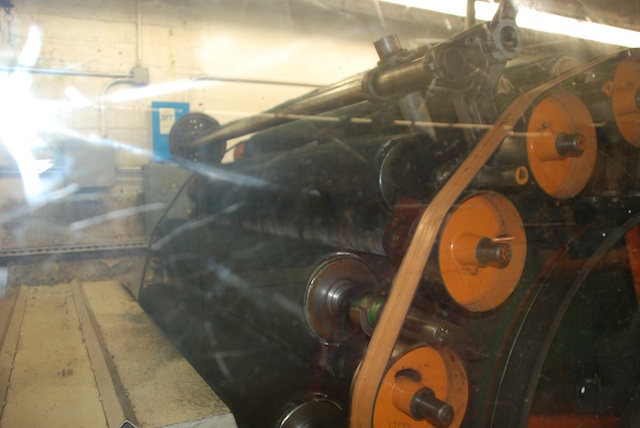 The Mill uses Rambouillet wool from Oregon and surrounding states and Merino wool from New Zealand and Australia. The wool is scoured in Texas and then comes to Oregon for spinning and weaving. The carding and spinning equipment was on the second floor. That room was quite humid. The guide told us that high humidity lessons the quantity of airborne particles so employees don’t have to wear dust masks. Now I wonder if that is the main reason for the humidity or if it makes carding and spinning more efficient (or both). The photo above shows the carding equipment operating behind plexiglass.
The Mill uses Rambouillet wool from Oregon and surrounding states and Merino wool from New Zealand and Australia. The wool is scoured in Texas and then comes to Oregon for spinning and weaving. The carding and spinning equipment was on the second floor. That room was quite humid. The guide told us that high humidity lessons the quantity of airborne particles so employees don’t have to wear dust masks. Now I wonder if that is the main reason for the humidity or if it makes carding and spinning more efficient (or both). The photo above shows the carding equipment operating behind plexiglass.